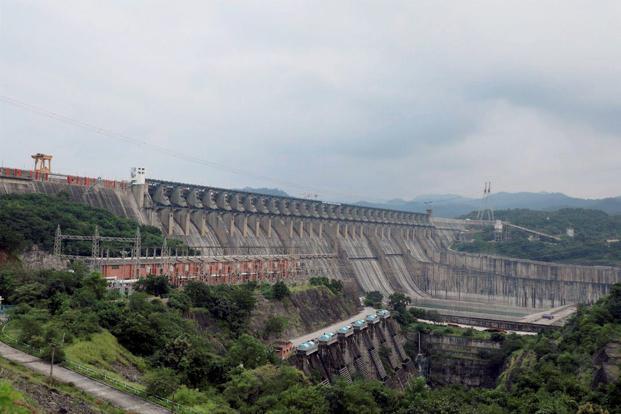
Optics is as air for politicians. It is no different for Prime Minister Narendra Modi and what is commonly known as the Narmada Dam. But even air can sometimes get dense with rhetoric.
On 17 September, Modi inaugurated the Sardar Sarovar Dam, the largest project of the Narmada, or Sardar Sarovar Project, near Gujarat’s border with Maharashtra. It was Modi’s birthday.
It also provided a perfect gift to Gujarat ahead of elections to its assembly that must be conducted before its term ends next January.
“We faced every opposition for this project,” an article in Mint quoted Modi as saying at a public meeting after the event. “The World Bank decided not to fund Sardar Sarovar Dam Project after some activists propagated that the project flouted some environmental rules. World Bank or no World Bank, the people of this country had faith in us and it is due to their determination that this project has been completed.”
It is correct that activists complained to the bank about matters of shabby resettlement and rehabilitation practices and environmental degradation. Indeed, activists are still complaining. But the fact is that the World Bank conducted its own survey before it stopped payment of the remainder of its commitment for the $300 million that, with other lenders, it had allocated for the Sardar Sarovar Dam.
In the 1995 report, Learning from Narmada, it highlighted the project’s stated design to irrigate nearly 2 million hectares of arid land, and the “promise” of drinking water for 30 million people in drought-prone areas, besides electricity for agriculture, urban areas and industry. “But they threaten the livelihoods of more than 140,000 people in the areas to be flooded by the Sardar Sarovar Dam and to be affected by the building of canals. And they may have negative environmental consequences,” the report stated.
The bank’s independent review was completed in June 1992. The review “found that the resettlement and environmental aspects of the projects were not being handled in accordance with bank policies”. Thereafter the bank “made its continuing support for the dam contingent on the borrower’s achievement of performance standards for resettlement and economic rehabilitation of displaced people, and for environmental protection. But in March 1993, the bank cancelled the remainder of its loan for the project at the request of the Indian authorities”. The project continued mainly with government funds.
Displacement, resettlement and rehabilitation issues continue to dog the project. Gujarat remains the greatest intended beneficiary of the multi-state Narmada project after Madhya Pradesh in terms of increased irrigation; and after Madhya Pradesh and Maharashtra in hydroelectricity. However, the bulk of the displaced along the Narmada river are in Madhya Pradesh, with the overall project’s ambit of 30 dams.
Activists, especially of the Narmada Bachao Andolan, have maintained that raising the Narmada Dam to its current height of 138.7 metres from its mid-2000s height of 121.92 metres would affect 200,000 people in Madhya Pradesh as more areas were submerged (The decision to raise the height was taken by the apex Narmada Control Authority on 12 June 2014, after Modi became Prime Minister). Indeed, as recently as February, the Supreme Court proposed setting up a three-member committee to review compensation and rehabilitation and resettlement issues for the project-displaced in Madhya Pradesh, Maharashtra and Gujarat.
As for the people of India and their “faith” in the project, it’s really a matter of public finance. In 2012, when Modi was the Bharatiya Janata Party (BJP) chief minister of Gujarat, there was even some celebration in the state over a high-level committee of the central finance ministry—a Congress-led one—recommending increased outlay in the 2012-17 Five-Year Plan to boost Gujarat’s Narmada-related canal-building in Kutch, Saurashtra and northern Gujarat.
In March 2015, the BJP government admitted in Gujarat’s assembly that the extent and speed of the construction of canals was wholly inadequate, but that’s another story inundated by the dam’s inauguration. As is the fact that the 2012-2017 Plan document, ‘Faster, More Inclusive and Sustainable Growth’ actually contains sharp criticism of big dams.
There are numerous instances of official misdirection to celebrate harnessing Narmada’s bounty. But meanwhile, there’s another celebration. The BJP government of Madhya Pradesh has planned a Jal Mahotsav—grand festival of water—to run from October to January along the Narmada in the Hanumantiya area. Visitors will be able to partake in luxury camping activities, yoga, and water sports on a part of the Narmada, the Indira Sagar reservoir, that contains numerous submerged villages and (once) vast forests.
[“Source-livemint”]
